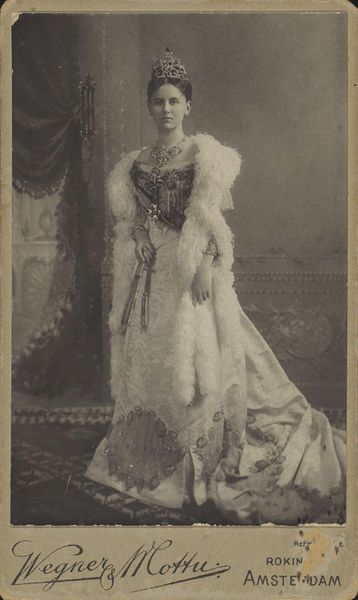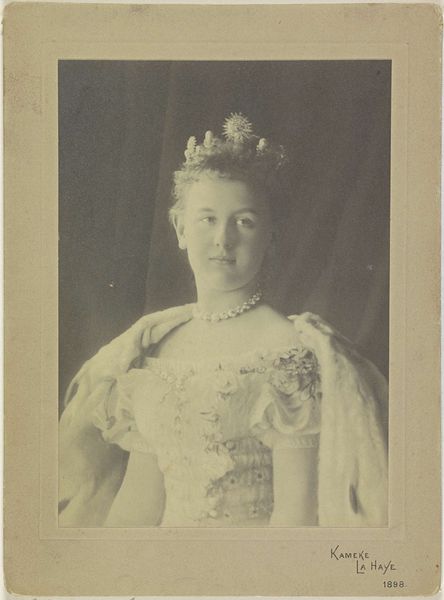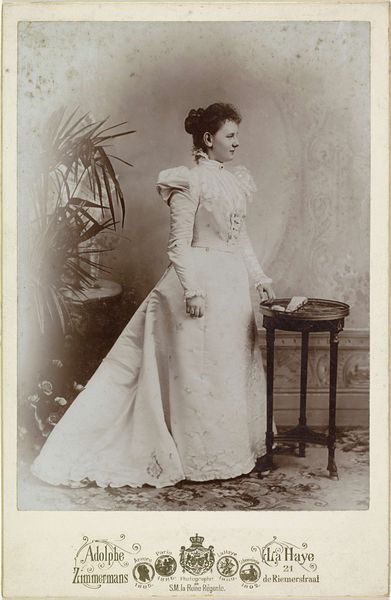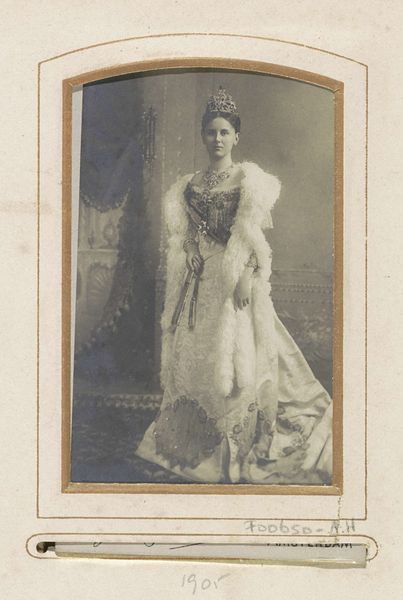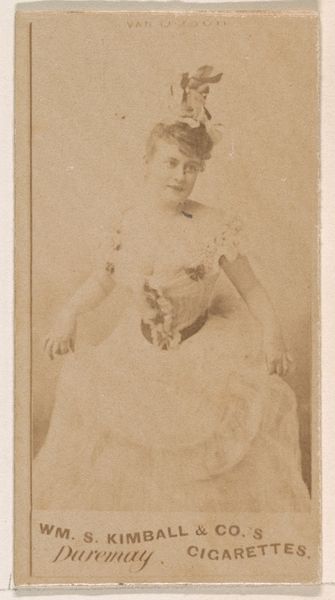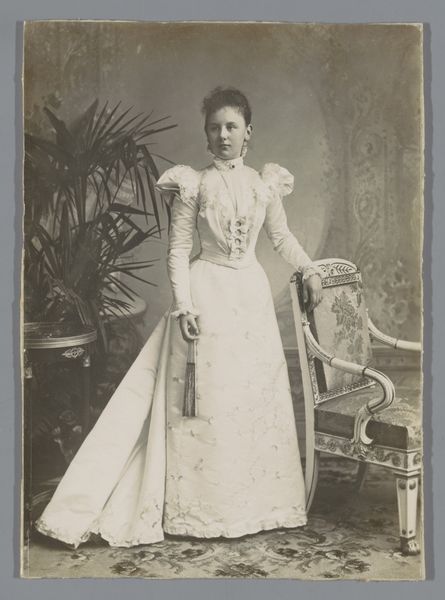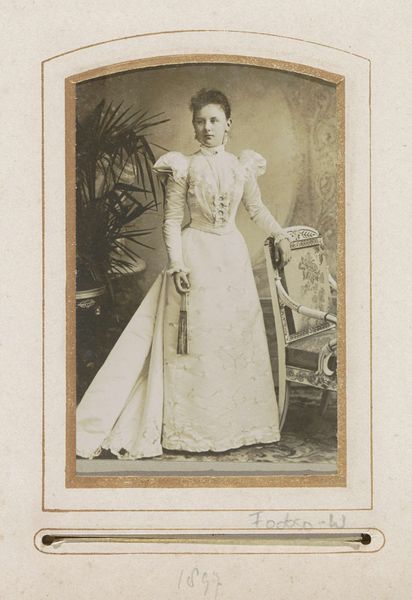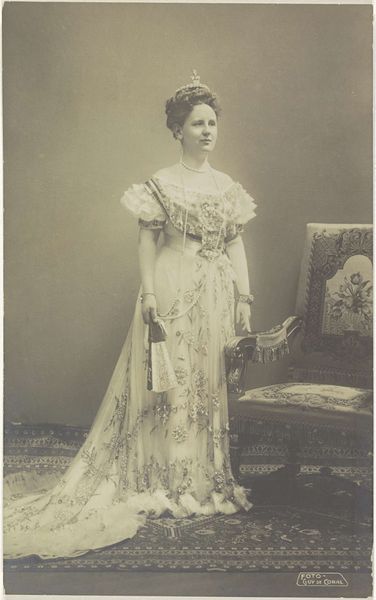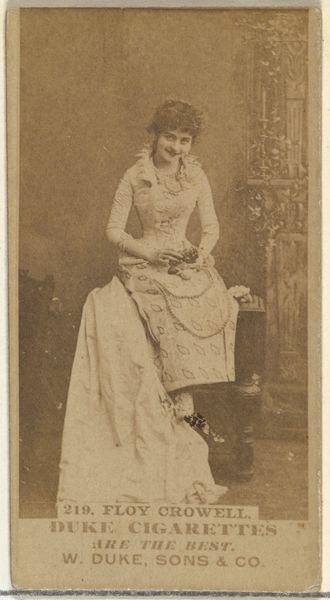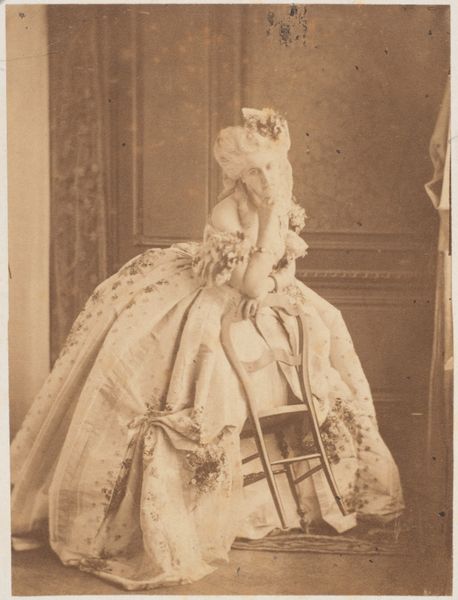
photography
#
portrait
#
photography
#
history-painting
Dimensions: height 190 mm, width 123 mm, height 216 mm, width 131 mm
Copyright: Rijks Museum: Open Domain
Editor: So here we have Richard Kameke’s photograph from 1898, "Portret van Wilhelmina, koningin der Nederlanden", which I understand means "Portrait of Wilhelmina, Queen of the Netherlands". It’s quite formal, and almost… staged, in a way that makes me think about constructed identity. What can you tell me about it? Curator: Well, looking at this through a materialist lens, I’m drawn to consider photography itself as a *process*, a means of production tied intrinsically to industrial and economic factors of the late 19th century. How does the act of photographing a monarch affect our understanding of both the subject and the process? What is being *consumed* here? Editor: I guess… status? Authority? But I don’t see a strong connection between "status" and the specific photographic techniques. What am I missing? Curator: Look closer. The print itself, the physical object: What can its materiality tell us? How does the creation of a reproducible image shift the understanding of monarchy as a singular entity? Consider, too, the labour involved: The photographer, the studio assistants, the textile workers who produced the Queen's dress and the velvet of the cloak beside her. Editor: So you're saying it's not just *what* is being depicted, but the labor, the industrial context behind producing the photographic print? Curator: Precisely. This isn’t simply a portrait, it’s the tangible product of multiple social and economic forces coalescing to create an image – a consumable commodity, a portrait of power filtered through the lens of industrialised production. This disrupts our traditional ideas of authorship in art. Who “created” this? Is it only the artist? What part does Wilhelmina herself, and those working for her, play? Editor: That really reframes my thinking on portraiture. Seeing it as less about an individual and more about collective processes involved in the art itself, changes my perspective. Thank you! Curator: Indeed, it highlights how intertwined art and its production are with broader economic and social conditions.
Comments
No comments
Be the first to comment and join the conversation on the ultimate creative platform.
